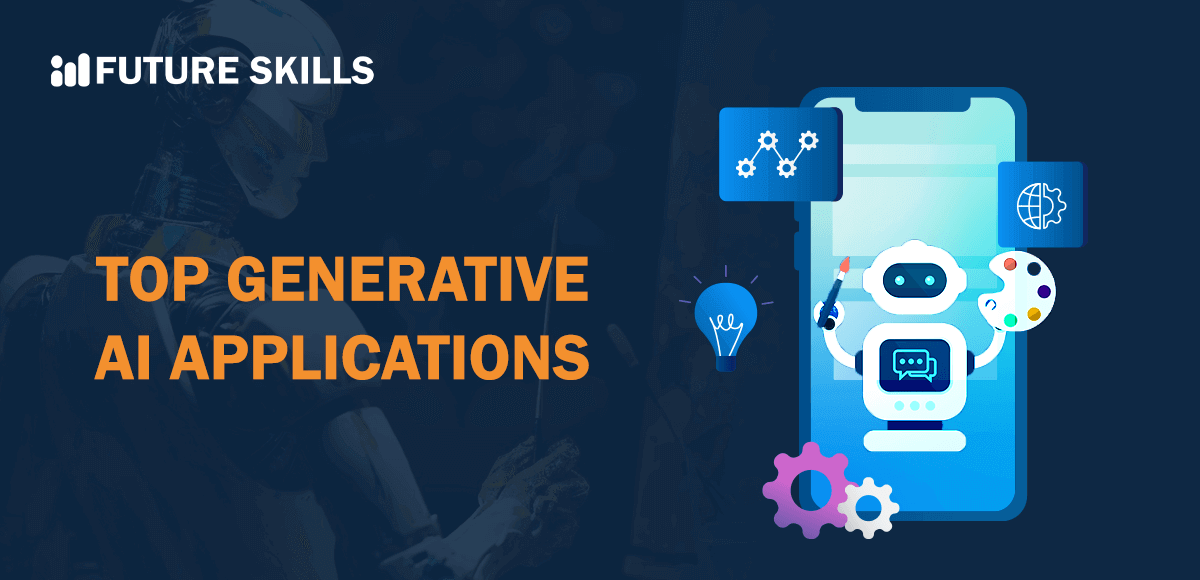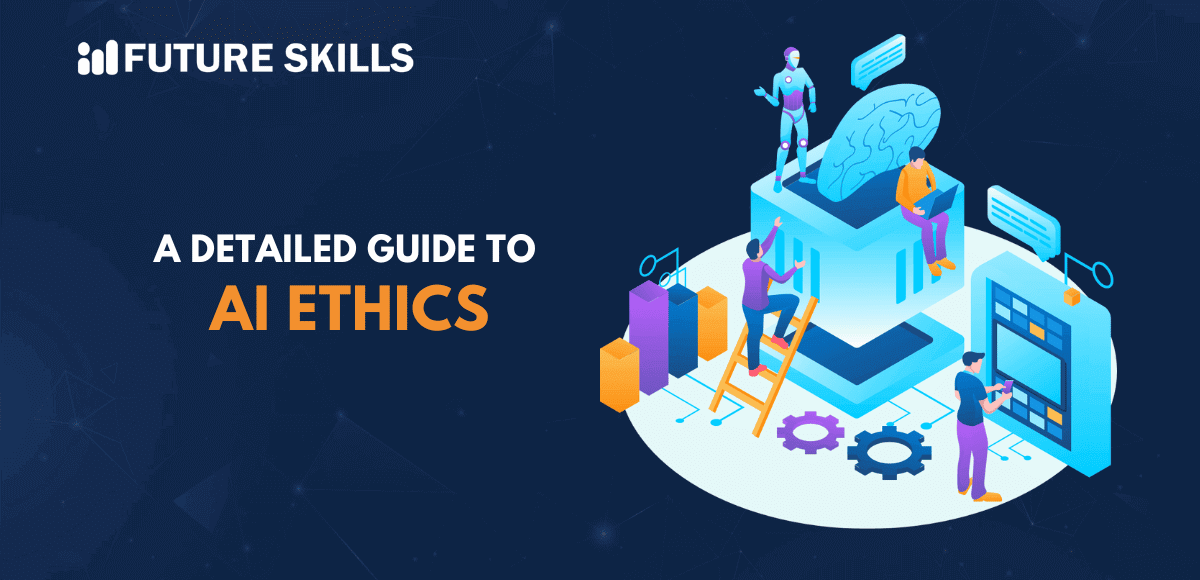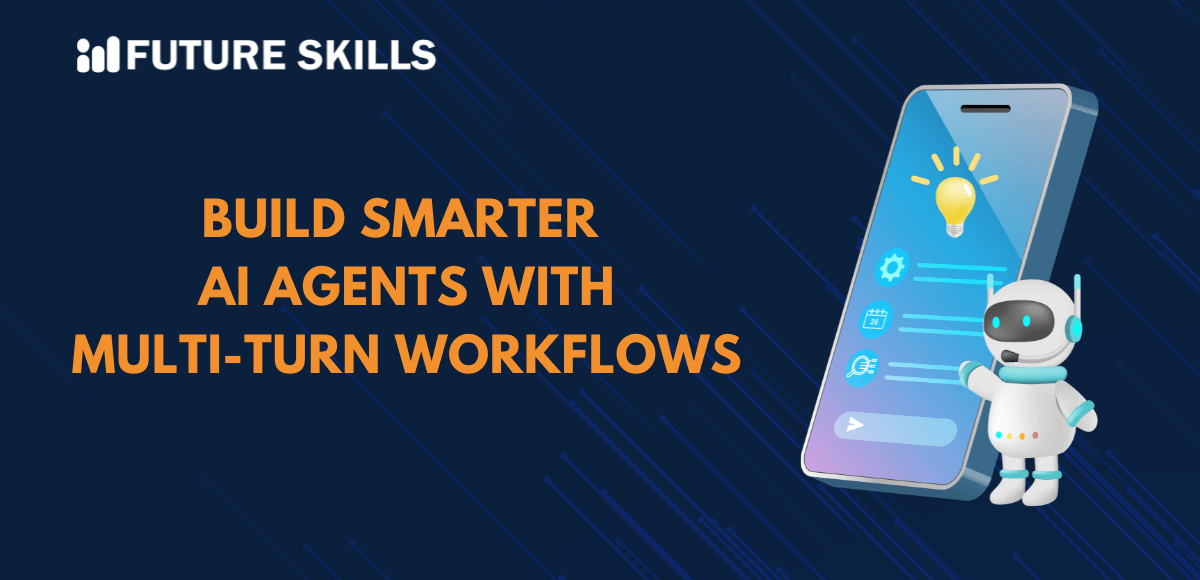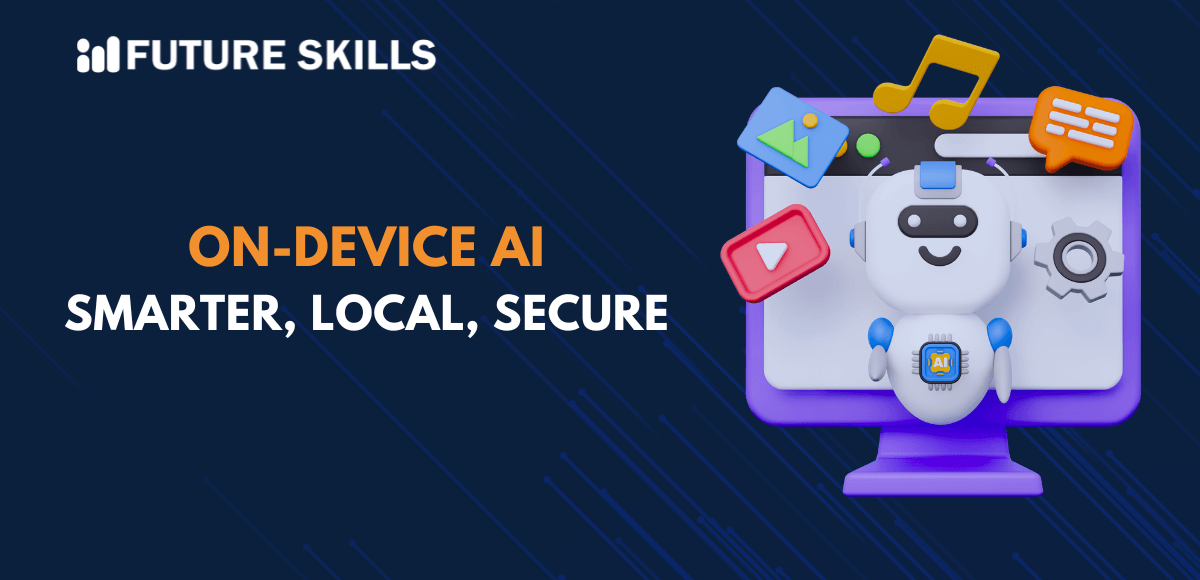Artificial Intelligence or AI has become a buzzword in the technological landscape now with promising developments and introducing new tools. The top 10 AI applications, such as ChatGPT, have shown how artificial intelligence could register a formidable impact on the world. As the developments in artificial intelligence continue gaining momentum, a new breed of AI applications has been setting some prominent milestones in the world of AI.
The growing popularity of top generative AI applications shows that artificial intelligence is reaching the public domain. For years, artificial intelligence has been perceived as a technological concept limited to discussions between Silicon Valley experts and academic researchers. However, artificial intelligence is gradually becoming a helpful technology for individuals as well as businesses for transforming how you deal with regular activities.
Generative AI presents an exclusive approach to revolutionizing different industries with artificial intelligence. ChatGPT emerged as one of the best AI apps with a simple interface and easy-to-understand functionalities. You enter a question, and it ‘generates’ an output/answer based on the pre-training data. In simple words, generative AI could refer to AI models which generate an output by using the training data. The following post helps you learn about the top applications of generative AI with some notable examples.
Level up your AI skills and embark on a journey to build a successful career in AI with our Certified AI Professional (CAIP)™ program.
What is Generative AI, and Why Is It Important?
The transformation of technological landscape has been evolving as humans prepare to work with intelligent machines. Smart machines with the power of cognitive technologies like AI and machine learning could help in achieving miraculous technological advancements. The continuously expanding list of popular generative AI applications has proved that smart machines with generative AI capabilities would define the future. Generative AI features a blend of artificial intelligence and ML algorithms for creating new videos, code, images, audio, and text. The AI and ML algorithms help in generating better outputs by identifying the patterns within the input.
As of now, you can find two major types of generative AI models, such as Generative Adversarial Networks or GANs and transformer-based models. GANs are specifically effective in creation of multimedia and visual content from images and text. The answers to ‘What is the most advanced AI app?’ would point to an example of a transformer-based model i.e. ChatGPT. Transformer-based models could take information from the training data for generating different types of text.
The importance of generative AI for the future is visible in the diversity of applications of artificial intelligence. Generative AI has the potential to address transformation requirements in multiple industries, such as healthcare, gaming, education, art, surveillance, and communication. You can find AI apps for art generation as well as writing presentations for business executives.
Do the new use cases of generative AI showcase its future? The Emerging Technologies and Trends Impact Radar Report 2022 by Gartner, generative AI would be one of the most rapidly developing and disruptive technologies. Let us take a look at the numbers which prove the potential of generative AI for the future.
- The report by Gartner suggested that generative AI would generate around 20% of the share data for consumer applications by 2025.
- Furthermore, generative AI will be applicable for almost 50% of drug discovery and development projects by 2025.
- Generative AI could also have a massive impact on manufacturing operations. Almost 30% of manufacturers will implement generative AI by 2027 to improve their product development processes.
Level up your ChatGPT skills and kickstart your journey towards superhuman capabilities with Free ChatGPT and AI Fundamental Course.
Top Applications of Generative AI
The review of top AI applications is a common practice in the existing technology landscape. People are interested in finding the answers to “What is the most advanced AI app?” without any fear of complexities in leveraging the power of AI. Generative AI has evolved as a major tool suitable for organizations across multiple industries. However, it is important to learn about the applications of generative AI and their value before using generative AI apps. Here are some of the top applications of generative AI which can help you improve your business operations.
-
Content Creation
One of the first additions among top applications of artificial intelligence points to content creation. Generative AI uses algorithms for generative content, which appears similar to content created by humans. Such types of generative AI applications have been gaining popularity as individuals want to save resources and time for automating content creation.
Applications of generative AI in the field of content generation focus on training machine learning models with humongous volumes of training data. The training data can be derived from existing text from different sources such as books, social media posts, and online articles.
AI and ML models for content generation also focus on learning the rules and patterns in natural human language. After training, the models could generate new text according to the input data. The best AI apps for content generation include ChatGPT, Jasper AI, and Google Gemini. You can review the differences between ChatGPT 3.5 and ChatGPT 4 to identify the impact of AI on content generation.
-
Creation and Editing Images
Generative AI has played a crucial role in transforming inputs into different types of outputs. For example, generative AI models could take text as input and create realistic images. The top AI apps for art, such as DALL-E 2, DeepAI, and Photosonic, are the best examples to prove the capabilities of generative AI.
Such types of generative AI use cases help in creating realistic images according to the desired settings, styles, locations, and subjects. As a result, users could help in easier creation of visual material at a rapid pace, which can support different objectives, such as media, education, advertising, design, marketing, and others.
An image generator could support graphic designers in development of required images. You have to provide semantic images or sketches, and the generative AI apps could help in creating a realistic output. The popular generative AI applications for generating artwork and images also help in modifying external details associated with an image.
Creation of images with generative AI helps in changing the color, form, and medium of artwork alongside ensuring retention of core elements. For example, super-resolution GANs based on Generative Adversarial Network technology can help in producing high-resolution variants of images.
Excited to understand the crucial requirements for developing responsible AI and the implications of privacy and security in AI, Enroll now in the Ethics of Artificial Intelligence (AI) Course
-
3D Shape Modelling
The applications of generative AI would also refer to the generation of 3D shapes. Three-dimensional modeling refers to the creation of 3D models of objects by using computer algorithms. A comprehensive review of the top 10 AI applications can help you identify how generative AI also helps 3D shape modeling. Generative AI supports the generation of 3D models which are similar to physical objects in terms of texture, size, and shape. Some of the popular examples of generative AI tools for 3D shape modeling include Alpha3D, 3DFY.ai, and Sloyd.ai.
The use cases of generative AI in 3D shape generation can support multiple practical applications in different sectors. For example, it can help in architecture, entertainment, and product design. For example, Generative Adversarial Networks use neural networks, which work in collaboration with each other to create detailed and realistic models. The applications of generative AI in product development and design have revolutionized the conventional approaches to creation of 3D shapes.
-
Creating and Editing Videos
The use cases of generative AI for content generation revolve largely around text. However, some of the emerging generative AI apps, such as Descript, Deepbrain AI, and Synthesia, help in creating videos. You can use the best AI apps applicable for video creation and editing for creating short videos as well as full-length movies.
The working of generative AI in creating and editing videos focuses on three different aspects. First of all, an image generation model creates the visual elements. The next task in generative AI focuses on text generation for composing a storyboard or script. Subsequently, you can also find the functionalities for music generation to prepare a soundtrack for the new video.
Enroll now in the AI for Business Course to understand the role and benefits of AI in business and the integration of AI in business.
-
Game Development
The applications of generative AI in game development applications also focus on utilizing generative artificial intelligence to create different unique types of game content. For example, generative AI applications can help in creating different characters, storylines, objects, and game levels. In addition, generative AI techniques can help in creating unique game content which offers enjoyable and engaging experiences to players.
Artificial intelligence or AI also serves promising support for creating non-playable characters or NPCs with unique behaviors and personality traits. As a result, the NPCs can provide more realistic interactions with players. The top examples of generative AI tools for game development include Unity Machine Learning Agents, Charisma AI, Houdini, and Hidden Door.
-
Programming Use Cases
The outline of generative AI use cases would also draw attention to programming code. Interestingly, you don’t need any manual inputs for creating code with generative artificial intelligence. Popular generative AI applications in the field of coding include OpenAI Codex, GitHub Copilot, Tabnine, and ChatGPT. The advantages of these tools are visible in accessibility of coding to professional developers as well as non-technical individuals.
Generative AI simplifies coding by suggesting relevant code completion according to the developer. As a result, developers can find fewer errors and save time, particularly in the case of repetitive tasks in programming. On top of it, generative AI is a powerful tool for identifying and resolving bugs in programming logic through a comprehensive analysis of code patterns.
Become a certified ChatGPT expert and learn how to utilize the potential of ChatGPT that will open new career paths for you. Enroll in Certified ChatGPT Professional (CCGP)™ Certification.
-
Music Creation Applications
The multiple functionalities of generative AI also include references to music generation. You can become a successful music producer with effective answers to “What is the most advanced AI app?” in creating music. Generative AI platforms such as Soundful, Amper Music, MuseNet, and AIVA can help you generate original music for different types of projects. One of the most prominent advantages of generative AI is the assurance of creating music that serves desired purpose in advertisements and other creative projects.
-
Creating and Designing Artwork
The capabilities of generative AI for creating images according to user inputs prove that generative AI can also create artwork. You can use some of the notable AI apps for art to create entirely original and new artwork without human input. For example, generative AI could generate abstract paintings with seamless representation of originality. At the same time, you must also note that the applications of generative AI in generating artwork are different from applications for generating images.
-
Generating Voice
The list of applications of generative AI would also include the use of Generative Adversarial Networks or GANs for producing human-like speech. Applications of text-to-speech or TTS generation models can address multiple business use cases such as education, advertisements, podcasting, and marketing. On top of it, the best AI apps for generative voice can also use existing voice sources for generating voice.
You can find promising applications for such functionalities of generative AI in film and gaming industries. Some of the top AI tools for voice generation, such as Replica Studios, Lovo, Synthesys, and Speechelo, have emerged as promising choices for creating voiceovers for commercials, games, and documentaries without hiring voice actors.
-
Virtual Assistants and Chatbots
The final entry among the top 10 AI applications points at virtual assistants and chatbots. You can rely on these generative AI tools to ensure human-like interactions with users to provide support or information. Chatbots are generally utilized for customer support mechanisms. However, generative AI can help chatbots by removing the need for programming chatbots. On the contrary, the chatbot or the virtual assistant would use deep learning algorithms for learning and improving their responses to user queries.
Bottom Line
The outline of most popular generative AI applications shows that you can use generative AI in multiple industries. You can explore the applications of generative AI across different sectors, such as manufacturing, filmmaking, advertisement, customer service, and communications. Most important of all, generative AI removes the requirement of manual intervention for various tasks.
For example, if you want to create a business report of 1500 pages based on data from a year, you can rely on generative AI. Feed the data generated throughout the year to the generative AI model and instruct the generative AI model for creating the business report. As a result, you can not only save time but also your valuable efforts. Learn more about generative AI and how it can transform the world in future.





